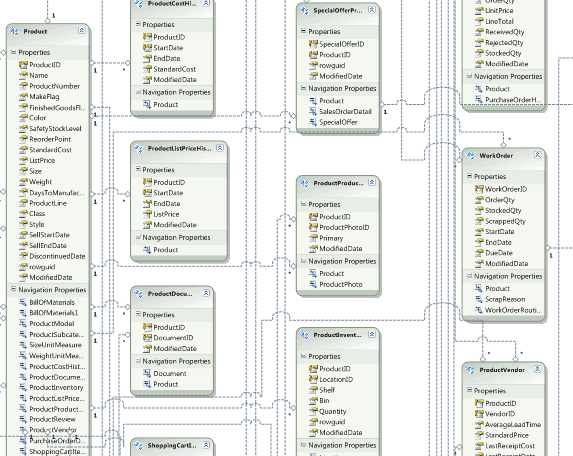

bak file to your SQL Server backup location.
ADVENTUREWORKS DATABASE 2008 DOWNLOAD
bak file from one of links provided in the download backup files section. To restore your database in SQL Server Management Studio, follow these steps:ĭownload the appropriate. If you're not familiar using SQL Server Management Studio (SSMS), you can see connect & query to get started. You can do so using the RESTORE (Transact-SQL) command, or using the graphical interface (GUI) in SQL Server Management Studio or Azure Data Studio. bak file to restore your sample database to your SQL Server instance. OLTPĪdditional files can be found directly on GitHub: If you're not sure what you need, start with the OLTP version that matches your SQL Server version. Lightweight (LT) data is a lightweight and pared down version of the OLTP sample.Data Warehouse (DW) data is for data warehousing workloads.OLTP data is for most typical online transaction processing workloads.Use these links to download the appropriate sample database for your scenario. SQL Server Management Studio or Azure Data Studio.This article provides direct links to download AdventureWorks sample databases, as well as instructions for restoring them to SQL Server and Azure SQL Database.įor more information about samples, see the Samples GitHub repository. Thus, although it seems somewhat silly to have two Connection Managers to the same database, using one for each of the different providers for SQL Server allow you to have the best of both worlds - good performance for getting data into and out of a database, and good (or at least better) stored procedure handling for parameter names and mapping.Applies to: SQL Server (all supported versions) Azure SQL Database Azure SQL Managed Instance Azure Synapse Analytics Analytics Platform System (PDW)

And, when you build lots of SSIS packages (for an ETL process, for example), you almost always have more than a few stored procedure calls that need to be made before Data Flow tasks, after them, in Event Handlers, etc. To me, this is much more intuitive and elegant. As for the parameters, they can now be mapped using the actual parameter names within the stored procedure: Now, however, with an ADO.NET-based Connection Manager, the property can be set to True whenever a stored procedure name is provided. When an OLE DB-based Connection Manager is used (as in the first example above), this property is set to False and is grayed out. Note the property called IsQueryStoredProcedure below the name of the stored procedure. In this case, you can simply specify the name of the stored procedure without any positional parameter markers: If, on the other hand, you use an ADO.NET-based Connection Manager with the Execute SQL Task, things are a bit more elegant. So, for the example above, you'd have to set up mappings to parameters as follows: In the Parameter Mappings tab of the task, the parameters then have to be specified using positional numbers, starting with 0. If the Execute SQL task uses an OLE DB-based Connection Manager, then calls to stored procedures look like this: However, as anyone who has used the Execute SQL task along with an OLE DB-based Connection Manager will tell you, dealing with stored procedures and their parameters isn't the most elegant. Thus, in Data Flow tasks within the package, I use the first Connection Manager for OLE DB Source and OLE DB Destination components when hitting the database. The OLE DB provider seems to be faster than the ADO.NET provider for getting data into and out of a SQL Server database. Now, here's why I set up these two different Connection Managers: The second one, to the same database, uses an ADO.NET provider, like this one to the AdventureWorks database (which I typically name something like AdventureWorks.ADONET): The first uses a standard OLE DB provider, like this one to the AdventureWorks database (which I typically name something like AdventureWorks.OLEDB): Whenever I create SSIS packages, I typically create two different Connection Managers for use against SQL Server databases.


 0 kommentar(er)
0 kommentar(er)
